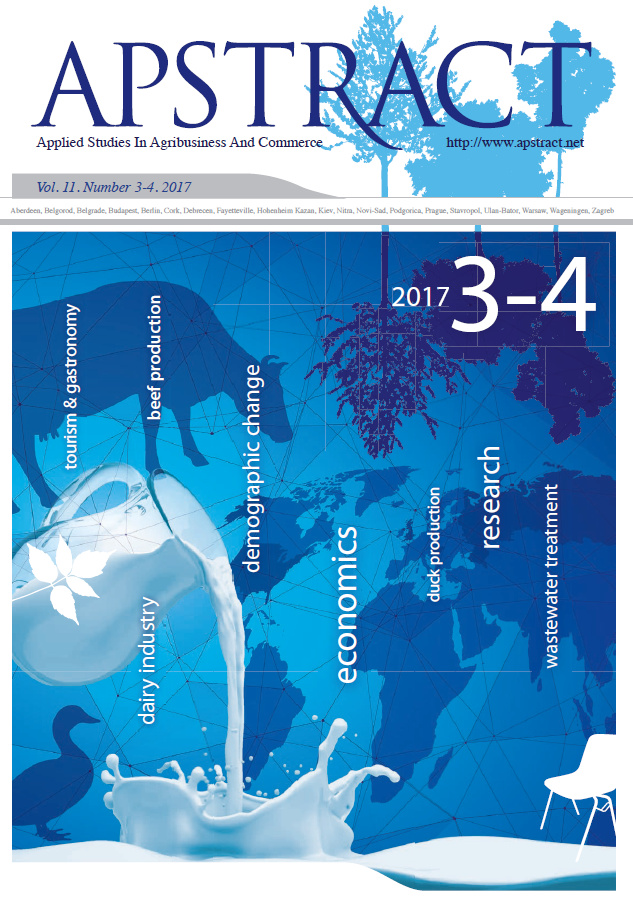Economic issues of duck production: A case study from Hungary
Authors
View
Keywords
How To Cite
Abstract
The Hungarian waterfowl sector is characterised by export orientation, as 55-57% of the revenue comes from exports, so its importance is high in the national economy. The production of slaughter animals in the duck sector has doubled in the last decade. The objective of the study is to examine production parameters, as well as the cost and profit situation of broiler duck production and to reveal the correlations between the factors with a case study through the example of a Hungarian company. The production parameters and cost data of the investigated farm (2014-2016, 96 production cycles) were analysed using descriptive statistical methods, correlation and regression analysis. The results show that the average cost of the duck produced in intensive, closed farming system was between 72.6 and 101.7 eurocent kg-1. The most significant cost items were feed (52-63%) and chicken cost (14-19%). The sales price decreased from 112.9 eurocent kg-1 to 98.4 eurocent kg-1 during the examined period, resulting in a profit from -3.3 to 25.7 eurocent kg-1, and overall profitability was decreasing. The study also revealed that there was no correlation between average cost and final bodyweight, while the correlation between average cost and reared period was weak. At the same time, the relationship between average cost and average daily weight gain, mortality, feed conversion ratio was moderate. In addition, the European Production Efficiency Factor (EPEF) can be adapted to the duck sector as strong, positive relationship can be scientifically verified between the indicator and average cost. There is a close correlation between the sold live weight per m2 and the amount of feed used per m2, as well as between the final bodyweight and the amount of feed used to rear a duck, while the correlation between average cost and the sold live weight per m2 is weak.
JEL Code: Q13, Q19


 https://doi.org/10.19041/APSTRACT/2017/3-4/9
https://doi.org/10.19041/APSTRACT/2017/3-4/9




